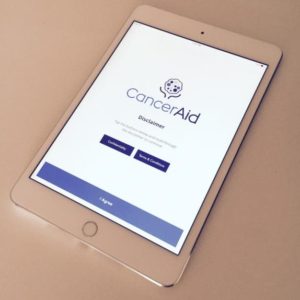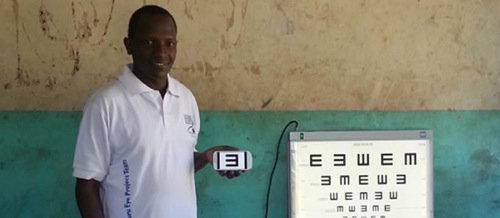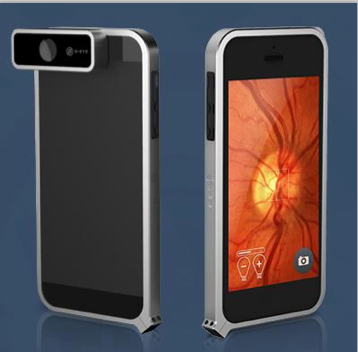Assessing Cardiovascular Risk through Retinal Fundus Imaging
WITHOUT SOURCES
Feburary 2018 saw the release of the exciting research paper ‘Prediction of cardiovascular risk factor from retinal fundus photographs via deep learning’ in Nature Biomedical Engineering. The Google Team had developed a new artificial intelligence technology using deep convolutional neural networks to assess both individual cardiovascular risk factors and the risk of a cardiac event through retinal fundus imaging.
The algorithm assesses individual risk factors (including smoking, blood pressure) by generating a heat map so the algorithm assesses the anatomical regions most relevant to the particular cardiovascular risk factor. It is particularly impressive that many of the risk factors which the algorithm predicted were risk factors previous not believed to be present in retinal images, including age, gender, smoking status and systolic blood pressure. Alongside assessing individual risk factors the team also developed a model to predict major adverse cardiovascular event onset within 5 years.
Current means of cardiovascular disease risk calculation include the Framingham CVD Risk Prediction Score, Pooled Cohort Equations, and Systematic Coronary Risk Evaluation. There are continued efforts to improve the quality of the risk prediction calculators, as there are limitations associated with some of them. For example the Framingham CVD Risk Prediction Score, which is the most commonly used risk estimation system worldwide, has been found to overestimate risk for women and has been less effective in predicting risk for elderly people.
This development has exciting implications in improving identification of individuals at risk for cardiovascular disease. Cardiovascular disease poses a significant global burden as the leading global cause of death. In 2015 Cardiovascular disease represented 31% of all global deaths of which three quarters occurred in low and middle income countries.
The algorithm not only has the ability to improve outcomes of patients at risk for developing cardiovascular disease through early identification, but also other diseases as the individual risk factors identified (including blood pressure, age, smoking, gender, race) can potentially be used to calculate risk for other diseases such as Chronic Kidney Disease and Diabetes.
WITH SOURCES
Feburary 2018 saw the release of the exciting research paper ‘Prediction of cardiovascular risk factor from retinal fundus photographs via deep learning’ in Nature Biomedical Engineering. The Google Team had developed a new artificial intelligence technology using deep convolutional neural networks to assess both individual cardiovascular risk factors and the risk of a cardiac event through retinal fundus imaging.
The algorithm assesses individual risk factors (including smoking, blood pressure) by generating a heat map so the algorithm assesses the anatomical regions most relevant to the particular cardiovascular risk factor. It is particularly impressive that many of the risk factors which the algorithm predicted were risk factors previous not believed to be present in retinal images, including age, gender, smoking status and systolic blood pressure. Alongside assessing individual risk factors the team also developed a model to predict major adverse cardiovascular event onset within 5 years.
(1).
Current means of cardiovascular disease risk calculation include the Framingham CVD Risk Prediction Score, Pooled Cohort Equations, and Systematic Coronary Risk Evaluation. There are continued efforts to improve the quality of the risk prediction calculators, as there are limitations associated with some of them. For example the Framingham CVD Risk Prediction Score, which is the most commonly used risk estimation system worldwide, has been found to overestimate risk for women(2) and has been less effective in predicting risk for elderly people (3).
This development has exciting implications in improving identification of individuals at risk for cardiovascular disease. Cardiovascular disease poses a significant global burden as the leading global cause of death. In 2015 Cardiovascular disease represented 31% of all global deaths of which three quarters occurred in low and middle income countries (4).
The algorithm not only has the ability to improve outcomes of patients at risk for developing cardiovascular disease through early identification, but also other diseases as the individual risk factors identified (including blood pressure, age, smoking, gender, race) can potentially be used to calculate risk for other diseases such as Chronic Kidney Disease and Diabetes.
Sources
1. Prediction of cardiovascular risk factors form retinal fundus photographs via deep learning. Nature biomedical engineering. https://www.nature.com/articles/s41551-018-0195-0
2. Validation of the Framingham general cardiovascular risk score in a multiethnic Asian population: Retrospective cohort study http://bmjopen.bmj.com/content/5/5/e007324?utm_source=trendmd&utm_medium=cpc&utm_campaign=bmjopen&trendmd-shared=1&utm_content=Journalcontent&utm_term=TrendMDPhase4
3. Value and limitations of existing scores for the Assessment of Cardiovascular Risk: A Review for Clinicians. Journal of the American College of Cardiology. https://www.sciencedirect.com/science/article/pii/S0735109709025029
4. WHO Cardiovascular Diseases Fact Sheet May 2017 http://www.who.int/mediacentre/factsheets/fs317/en/






